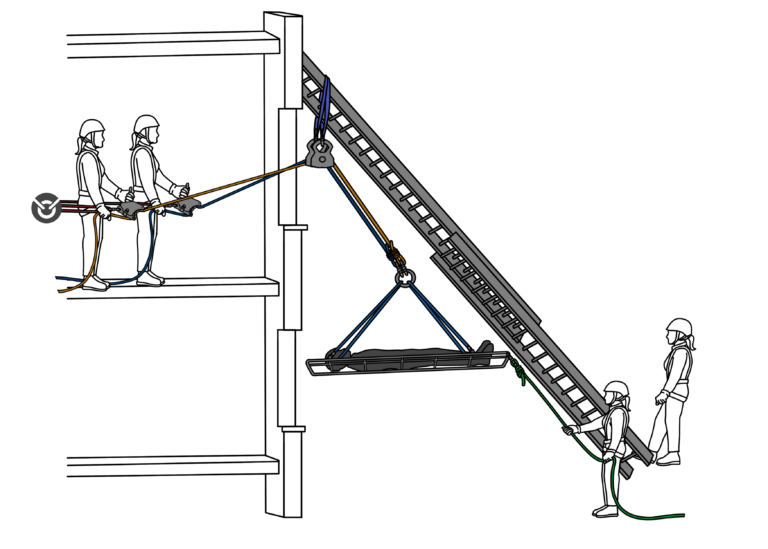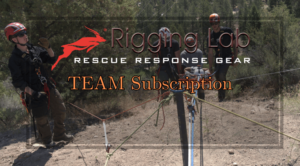Advanced Ladder Techniques and Applications
Advanced Ladder Technique and Applications in rescue operations serve purposes far beyond access—they become structural supports, patient transport systems, and critical tools for overcoming complex obstacles. In advanced rescue scenarios, techniques such as securing a litter to a ladder or deploying a cantilever ladder expand the tool’s functionality. These methods are essential in challenging environments, ensuring efficiency and safety while adhering to NFPA 1006: Standard for Technical Rescue Personnel Professional Qualifications (2021).
Moving a Litter with a Ladder
When terrain is unstable, securing a litter to a ladder ensures safer patient movement. This method provides a rigid frame, improving control and stability. Rescuers must position the litter evenly along the ladder and secure it with webbing straps, rope lashings, or carabiners. A belay system adds extra control, especially on steep inclines.
This approach works well in confined spaces where standard stretchers lack rigidity. Structural collapses often require patient transport over unstable ground. In high-angle rescues, ladders offer guided descents when traditional systems are unavailable.
Cantilever Ladders
Cantilever ladders extend beyond stable footing, helping rescuers reach areas with no direct ground support. These ladders create a bridge over gaps or serve as platforms in precarious conditions.
To set up a cantilever ladder, rescuers must anchor the base using weights, rigging, or structural attachments. The unsupported end extends into the operational area, with careful counterbalancing for stability. Additional support, such as guy lines or tethered rescuer positioning, reinforces the system. When applied correctly, cantilever ladders create safe pathways, allow for victim retrieval, and improve access in challenging rescues.
Real-World Applications
In an urban collapse, a team used a litter-ladder combination to move victims over debris where stretchers failed. The ladder’s rigidity allowed smoother transport. In an industrial rescue, a cantilever ladder provided the only way to reach a worker trapped in a collapsed vat. Mountain rescue teams often use cantilevered ladders as high directionals, ensuring safe victim movement in complex terrain.
Check out these articles –
Moving and Leaning Ladders in Rescue Operations
Ladder Techniques in Rescue Operations
Conclusion
Advanced ladder techniques improve rescue teams’ flexibility. Whether securing a litter for transport or using a cantilever ladder to extend reach, these methods save lives. NFPA 1006 provides the safety framework needed for these operations. Training and experience help rescuers apply ladders effectively, making them an essential tool in technical rescue.
Peace on your Days
Lance










